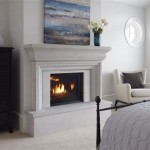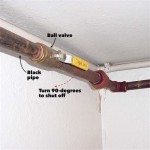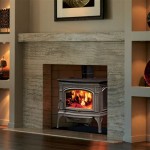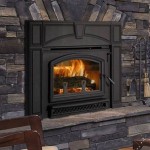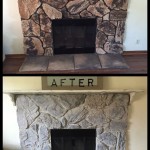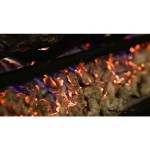Glass Tile on Fireplace: A Comprehensive Guide
The fireplace, often considered the heart of a home, serves as a focal point for gatherings and provides warmth during colder months. Its design and material significantly contribute to the overall aesthetic of a living space. Glass tile, with its inherent beauty and versatility, has emerged as a favored material for fireplace surrounds and facades. This article delves into the various aspects of using glass tile on fireplaces, covering selection, installation, maintenance, and safety considerations.
Understanding the Appeal of Glass Tile
Glass tile offers a unique blend of aesthetic appeal and functional benefits that makes it a compelling choice for fireplace applications. Its reflective properties brighten a room, creating a sense of spaciousness and elegance. The material's translucent nature allows light to penetrate and refract, adding depth and visual interest that other tiling options might lack. Furthermore, glass tile is available in a vast array of colors, shapes, and sizes, providing designers with substantial creative freedom to achieve a desired style, from contemporary minimalism to intricate mosaics.
One of the key advantages of glass tile is its non-porous nature. Unlike ceramic or natural stone, glass does not absorb water or stains, making it exceptionally easy to clean and maintain. This characteristic is particularly beneficial around a fireplace, where soot and ash can accumulate. A simple wipe-down is typically all that is needed to keep glass tile looking pristine. Moreover, the non-porous surface inhibits the growth of mold and mildew, promoting a healthier indoor environment.
Durability is another significant factor contributing to the popularity of glass tile. When properly installed, glass tile can withstand the heat produced by a fireplace without cracking or warping. High-quality tempered glass tiles are specifically designed to resist thermal shock, ensuring long-lasting performance and visual appeal. The resistance to fading and discoloration further enhances the longevity of glass tile, maintaining its vibrant appearance for years to come.
Selecting the Right Glass Tile for a Fireplace
Choosing the appropriate glass tile for a fireplace requires careful consideration of several factors, including aesthetics, heat resistance, and installation requirements. The type of fireplace, whether it is a traditional wood-burning model, a gas fireplace, or an electric unit, will influence the selection process. Different types of fireplaces generate varying levels of heat, which must be factored into the heat-resistance rating of the chosen tile. It's generally advised to use tempered glass, which is more resistant to thermal stress.
Aesthetic considerations play a crucial role in the selection process. The color, size, shape, and finish of the glass tile should complement the overall design of the room and the existing fireplace surround. Darker shades of glass tile can create a sophisticated and dramatic effect, while lighter colors can brighten the space and create a more airy feel. Smaller mosaic tiles can add intricate detail and texture, while larger format tiles offer a more contemporary and streamlined look.
The finish of the glass tile also impacts its appearance and performance. Glossy tiles reflect more light and create a brighter, more vibrant look, but they may also show fingerprints and smudges more easily. Matte tiles offer a more subtle and understated aesthetic, and they tend to be more slip-resistant. Textured glass tiles can add depth and visual interest, but they may also be more difficult to clean. When selecting a finish, consider the desired aesthetic, maintenance requirements, and the overall functionality of the fireplace.
Beyond aesthetics and heat resistance, the quality of the glass tile is paramount. Opting for high-quality materials from reputable manufacturers ensures the longevity and durability of the installation. Cheaper, lower-quality tiles may be more prone to cracking, chipping, or fading over time. Reading reviews and consulting with experienced tile installers can help to identify reliable brands and products.
The Installation Process: Crucial Steps for Success
Proper installation is essential to ensure the longevity and performance of glass tile on a fireplace. The installation process involves several critical steps, including surface preparation, mortar selection, tile setting, grouting, and sealing. Each step must be executed with precision and attention to detail to achieve a durable and aesthetically pleasing result.
Surface preparation is the first and perhaps most crucial step in the installation process. The surface to which the tile will be applied must be clean, dry, and level. Any existing paint, wallpaper, or loose debris should be removed. If the surface is uneven or damaged, it should be repaired with a patching compound or self-leveling mortar. A layer of cement backer board may be installed to provide a stable and moisture-resistant substrate for the tile.
Selecting the appropriate mortar is another critical consideration. A high-quality thin-set mortar specifically designed for glass tile is essential. This type of mortar typically contains polymers that enhance adhesion and flexibility, accommodating the thermal expansion and contraction that can occur around a fireplace. It is important to follow the manufacturer's instructions regarding mixing ratios and application techniques.
The tile setting process involves applying the mortar to the prepared surface and carefully positioning each tile according to the desired pattern. Spacers are used to ensure consistent grout lines and to prevent the tiles from shifting during the curing process. A wet saw is often used to cut the tiles to fit around the fireplace opening and any other architectural features. It’s essential to check the level and alignment of the tiles frequently during the setting process.
Once the mortar has cured, the grout can be applied. The grout fills the spaces between the tiles, providing a watertight seal and enhancing the overall appearance of the installation. A non-sanded grout is typically recommended for glass tile, as it is less likely to scratch the surface. The grout should be applied evenly and thoroughly, and any excess grout should be wiped away with a damp sponge.
Sealing the grout is the final step in the installation process. A grout sealer protects the grout from stains and moisture, extending its lifespan and making it easier to clean. The sealer should be applied according to the manufacturer's instructions, allowing it to penetrate the grout and create a protective barrier.
Maintenance and Safety Considerations
Maintaining glass tile on a fireplace is relatively straightforward due to its non-porous nature. Regular cleaning with a mild detergent and water is typically sufficient to remove soot, ash, and other debris. Avoid using abrasive cleaners or scouring pads, as these can scratch the surface of the glass. A soft cloth or sponge is recommended for cleaning.
Inspecting the tile and grout periodically is also important. Look for any signs of cracking, chipping, or loose grout. If any damage is detected, it should be repaired promptly to prevent further deterioration. Re-sealing the grout every one to two years can help to maintain its watertight seal and prevent staining.
Safety is a paramount consideration when using any material around a fireplace. Ensure that the glass tile is installed according to all applicable building codes and safety regulations. Maintain a safe distance between the fireplace and any flammable materials, such as furniture or curtains. Regularly inspect the fireplace and chimney for any signs of damage or blockage.
Consider the type of fireplace being used. Gas fireplaces often require specific clearances and ventilation requirements. Regular professional inspection and maintenance is recommended to ensure that the fireplace is operating safely and efficiently. If the fireplace is wood-burning, ensure that the chimney is clean and in good repair to prevent the buildup of creosote, which can pose a fire hazard.
Protecting the surrounding surfaces from heat damage is also an important safety consideration. A non-combustible hearth extension should be installed in front of the fireplace to protect the flooring from sparks and embers. Heat shields can be used to protect walls and mantels from excessive heat. Following these safety precautions will help to ensure that the fireplace is used safely and responsibly.

Sleek And Modern Fireplace With Grey Black Glass Tile

Glass Tile Fireplace Watertown Stone

Stone Glass Mosaic Fireplace

Love The Glass Tile Just Dying To Decorate Home Fireplace Surrounds

Glass Tile Fireplace Watertown Stone

How To Tile A Fireplace Even If It S Brick The Handyman Daughter

27 Cool Collection Glass Mosaic Fireplace Surround Home Decor And Garden Ideas Tile Around

14 Fresh Designs For Tiled Fireplaces Bob Vila

Fireplace Tile Design Westside And Stone

Glass Tile Fireplace Surround Design Ideas
Related Posts



